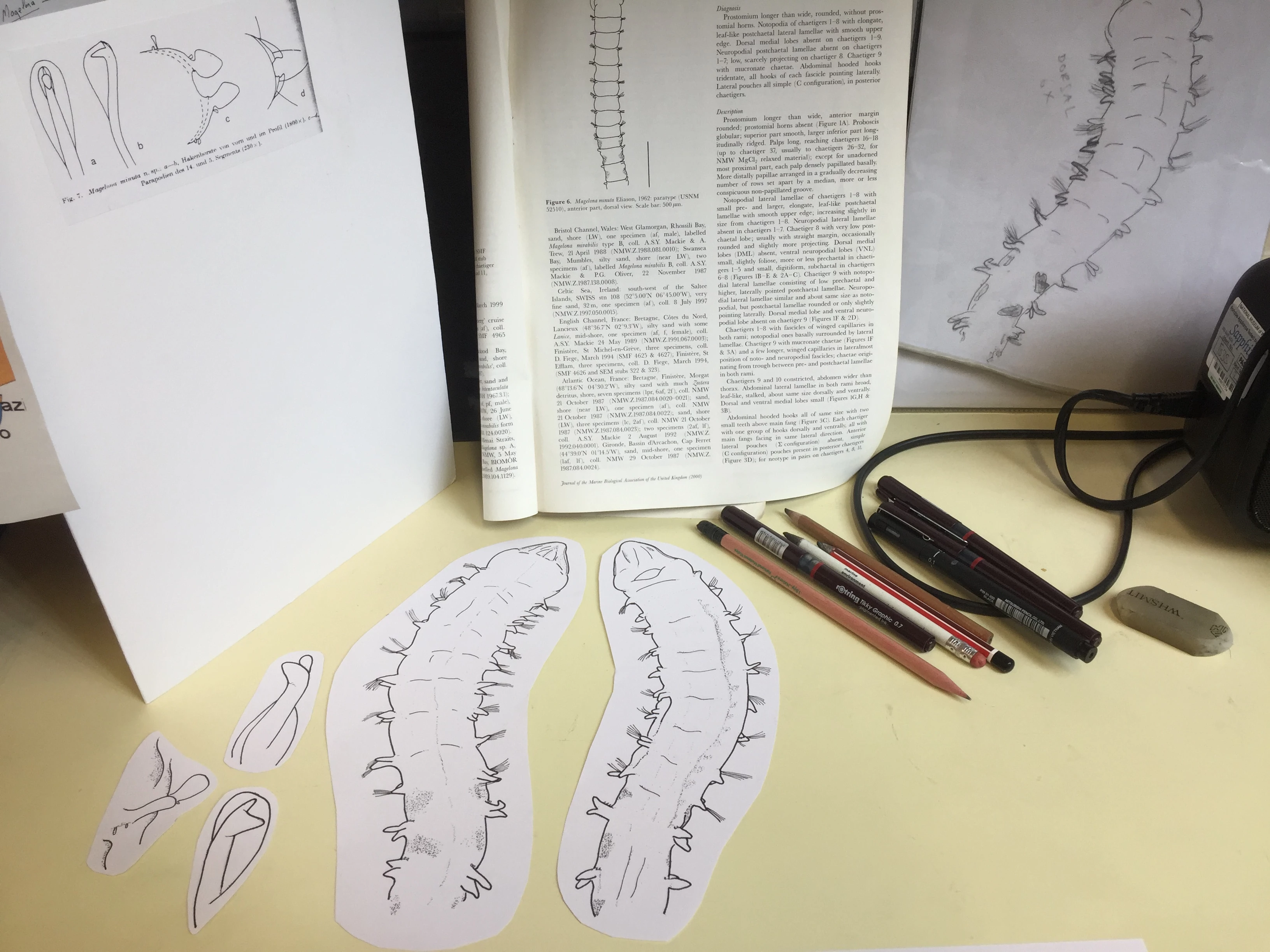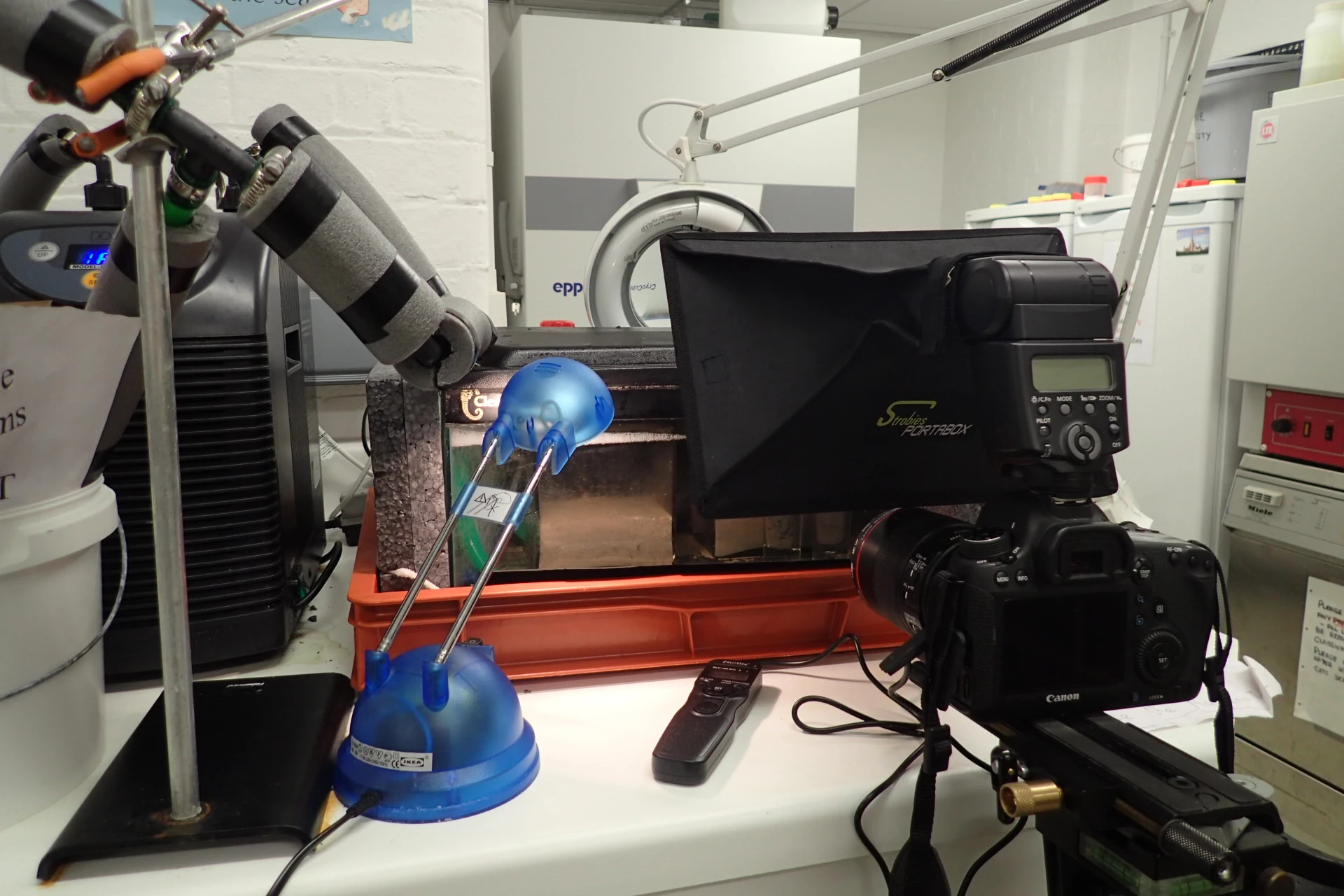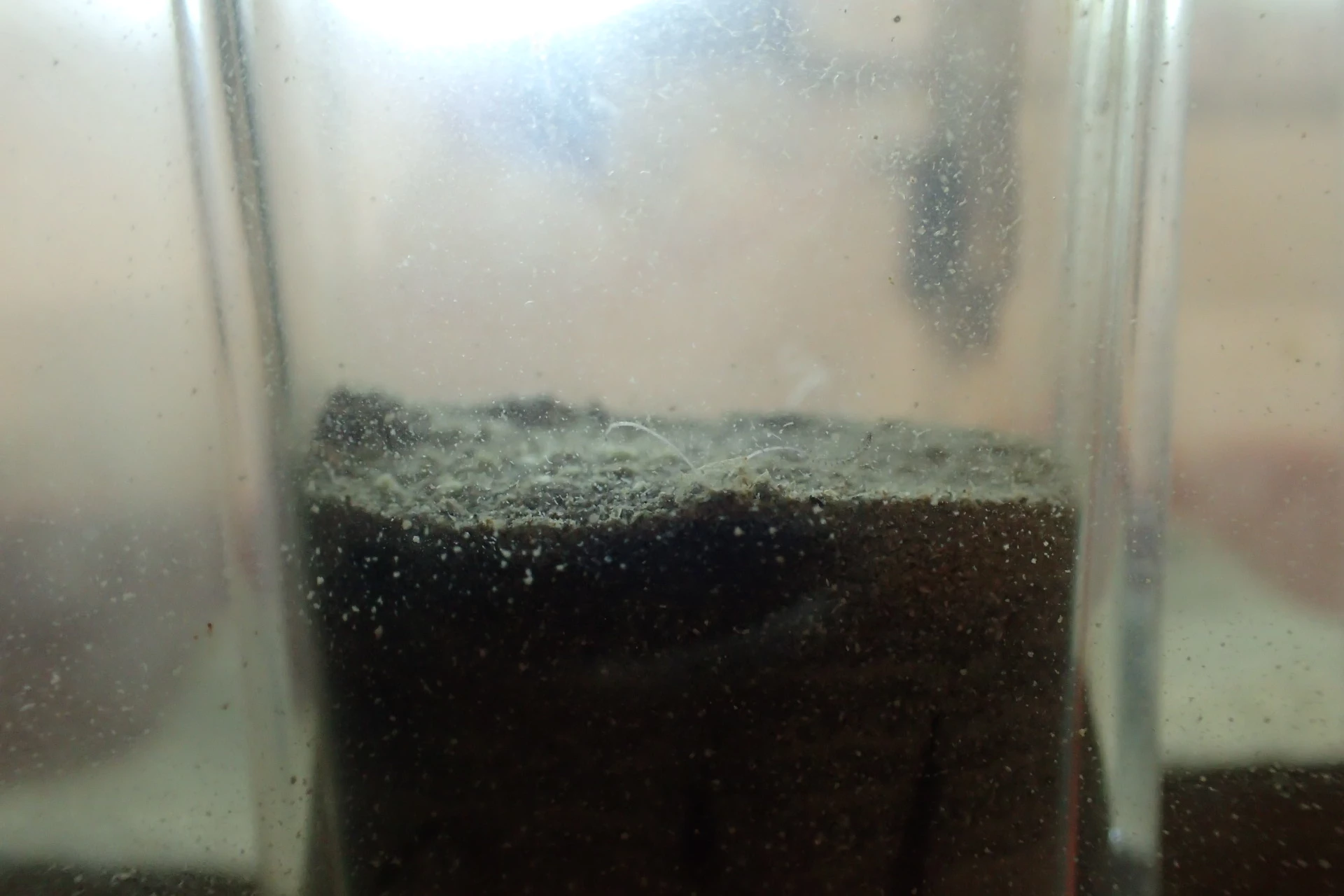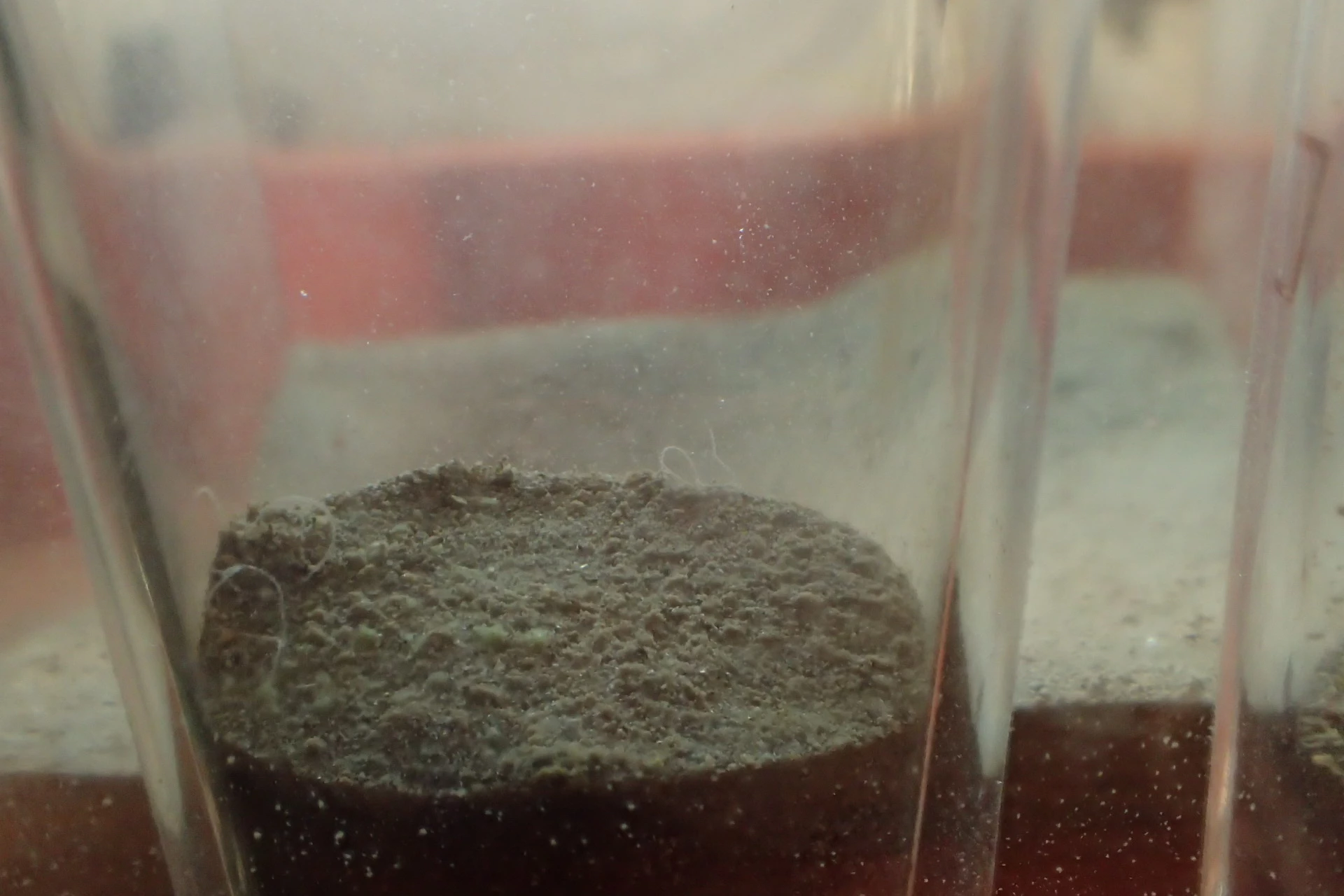A new world of worms - beginning a Professional Training Year at the museum
, 4 August 2017
Walking up to the stunning building that is the National Museum of Wales on the first day of my placement in July, I readied myself for new experiences in the world of marine invertebrate research! I am a Cardiff University student studying zoology and have always been fascinated with the sea, from giant whales to microscopic plankton. However, the weird and wonderful world of marine invertebrates particularly sparked my interest after being offered the chance to study a family of mysterious bristle worms (polychaetes) called Magelonids; perhaps fittingly, commonly called shovelhead worms because of the presence of their flattened heads.
The intention of this year is to learn more about these burrowing animals so a better understanding of their behaviour, ecology and anatomy can be reached. Hopefully, with these aims, a relatively unknown organism can become more accessible and recognised to everyone.
There are many questions to explore, for example, some species of Magelonidae possess abdominal pouches, which the function of is unknown. Why would they need these conspicuous structures? Also, very little is known about how these worms reproduce. It is unknown as to whether they reproduce once (semelparity) or have multiple reproduction events (iteroparity). Furthermore, do they reproduce at the same time in a kind of mass-spawning event?
I will tackle these kinds of questions by observations of live specimens in the museum lab with the aid of time-lapse photography for overnight observations. By examining the worms in a tank with conditions similar to in their natural environment, variables such as movement in tubes, responses to food, timings of different behaviours, and hopefully, with a bit of luck, reproduction or pouch function can be reviewed.
Additionally, I will use previous research in conjunction with museum specimens of the family to help me not only try to answer these uncertainties, but also to develop other skills, such as scientific drawing and taxonomy. By viewing specimens under the microscope, a camera lucida can be used to help draw an outline of the desired subject. This template can then be utilized to fill in details of the species, which is helpful to get a clear and simple view of the animal’s morphology.
It has been an interesting and exciting first few weeks here and I am eager to carry on observations and delve deeper into gaining a better understanding of the marine world. Thus, opening up opportunities for us to perceive these secretive and fascinating animals in a different light entirely.



